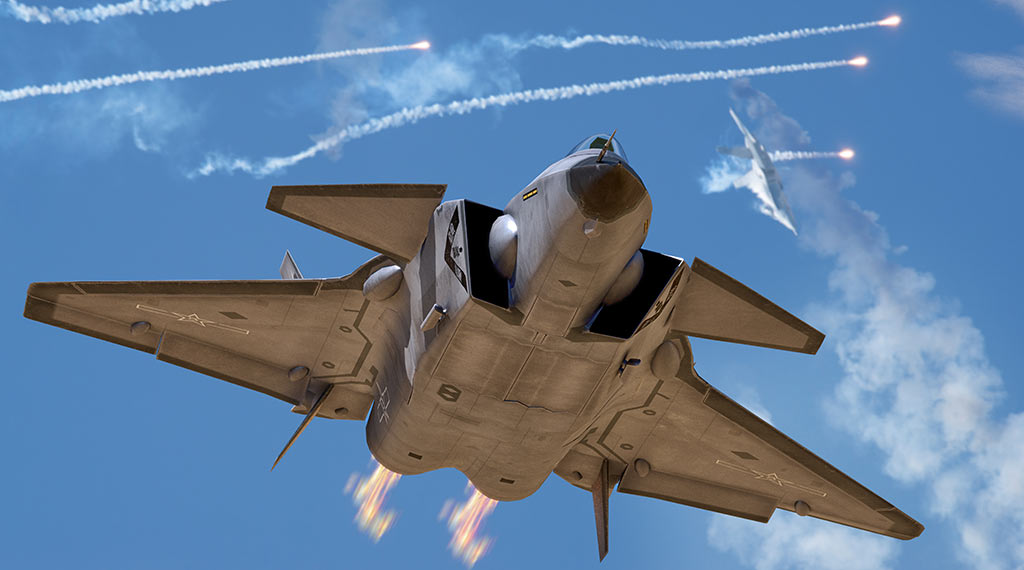
Last month, a pilot for the People’s Liberation Army Air Force (PLAAF) claimed he flew his J-20 stealth fighter jet over Taiwan’s airspace and went undetected.
J-20 Drama over Taiwan?
While Beijing has ramped up its incursions into the Taiwanese Air Defense Identification Zone in recent months, Taiwan’s air force carefully monitors its positions. An undetected flight would be very unusual. The PLAAF pilot, Capt. Yang Juncheng of the Wang Hai Brigade, also boasted that “there is no such thing as the Taiwan Strait” in an interview with a Chinese media outlet. For decades, the unofficial buffer zone that Yang is referring to has helped maintain peace between Beijing and Taipei. However, the People’s Republic of China has become more aggressive rhetorically and militarily in its aim to reclaim the independent island as its own. As the current mainstay of its navy, the fifth-generation J-20 Chengdu fighter will continue as the dominant tool for China’s scare tactics over Taiwan.
The Chengdu stealth fighter first entered service with the PLAAF six years ago, becoming the third operational fifth-generation jet in the world. Nicknamed the Mighty Dragon, its stealth airframe was designed to counter the U.S.-made F-22 and F-35 fifth-generation fighters.
The jet’s design derived from China’s J-XX program in the 1990s, and the jet officially debuted at the China International Aviation and Aerospace Exhibition in 2016. Initial prototypes of the J-20 incorporated Russian parts and technology. Striking similarities between the Chinese fighter and its American counterparts remain evident today.
The J-20 Is Equipped With Russian Parts…
Moscow claimed that many of the Chengdu’s capabilities and designs mirrored its own MiG 1.44 prototype, which was revealed globally in the late 1990s. Additionally, J-20s continue to fly with either Russian-designed AL-31 engines or China’s domestically made equivalent, the WS-10C. The AL-31 series of engines lacks significant thrust, ultimately limiting the capabilities of the fighter and negatively impacting its fuel efficiency and maneuverability.
Moscow has denied Beijing’s request for more advanced engines due to fears that the People’s Liberation Army would reverse-engineer them — a tactic China has practiced often. In fact, China’s Shenyang J-11 and J-16 airframes are directly derived from Soviet-era Su-27 prototypes that the country acquired in the late 1980s. Beijing later reverse-engineered a Russian-made Su-33 airframe purchased from Ukraine to design its Shenyang J-15 carrier-based fighter.
…And Looks Like the F-35
The J-20’s characteristics also mirror the Lockheed Martin F-35 stealth fighter. In addition to stealth and supercruise, the J-20 can carry weapons on external pylons and can operate in a so-called beast mode similar to that which makes the F-35 Lightning II a standout fighter.
Analysts also believe that the J-20 features a sensor suite that parallels the Lightning II’s Electro-Optical Targeting System. The twinjet all-weather Mighty Dragon has a reported range of 1,200 miles, a servicing ceiling of 55,000 feet and a maximum speed of Mach-2.55. While these characteristics make the Chengdu a formidable threat to its American near-peers, the extent of the jet’s capabilities remains unknown.
Ramping Up Production of the J-20
Beijing is certainly relying on its fifth-generation fighter to lead its military’s aviation fleet. A recent report published by the South China Morning Post indicated that Beijing is in the process of increasing production of the J-20 to match or even exceed the number of U.S. F-22 Raptors in service today.
As more Mighty Dragons make it through the production line, an escalation of incursions over Taiwan is likely to follow.
Last week, four-star U.S. General Mike Minihan, who heads the Air Mobility Command, predicted that China would try to take Taiwan militarily by 2025. If accurate, Beijing would undoubtedly rely on its fleet of J-20 fighters to execute this mission.
- US Stands Up New Drone Strike Force in the Middle East - December 9, 2025
- Has Russia Finally Sold its Su-35s to Iran? - December 2, 2025
- Iran’s Growing Missile Arsenal Is a Challenge for Israel - November 18, 2025
